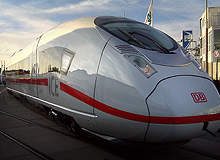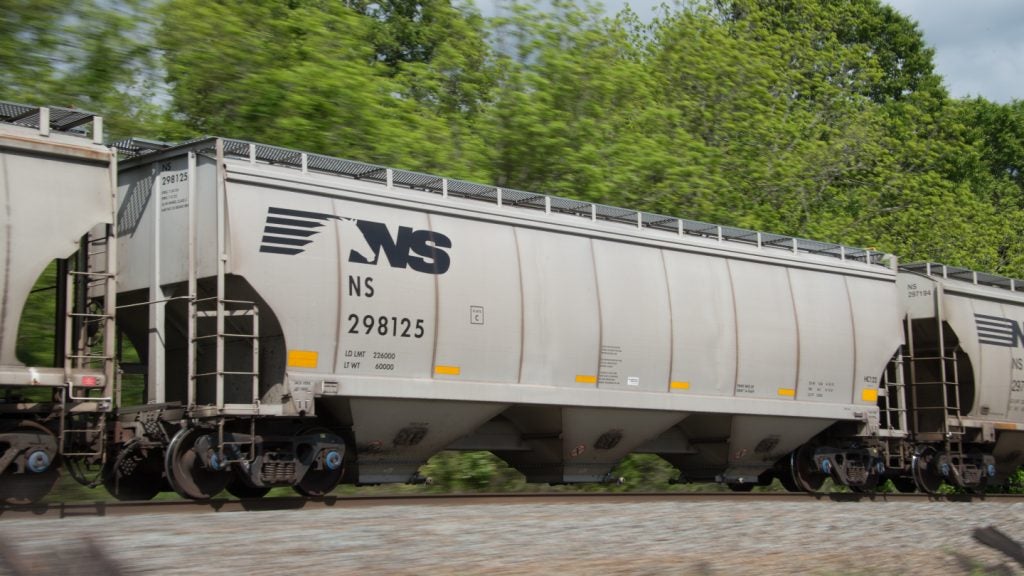
The global rail industry is in a period of rapid development around the world, especially in the US where rail investment is exploding under the Obama administration after decades living in the shadow of the country’s highways and airlines.
As take-up increases and the technology behind high-speed rail becomes ever more viable in a wide range of regions, passengers are accepting trains as a primary form of mass transit. As such, competition is growing and rail operators are looking for new ways to enrich the passenger experience and separate themselves from the competition.
With hundreds of commuters often crowded onto train carriages during peak hours, passenger comfort is a major concern for operators around the world. The fear is that customers driven to the edge by sweltering temperatures and claustrophobic conditions might well decide that risking traffic jams on the road is a more attractive option after all.
While train carriages can mitigate some of the misery of overcrowding with good design and punctual service, an efficient heating, ventilation and air conditioning system (HVAC) is the best way of regulating temperature and air quality on crowded trains battling with accumulated body heat. Here we look at some of the options open to rail operators looking to manage air flow to keep their passengers comfortable and safe.
Rail HVAC standards
See Also:
One of the most important guarantees that rail operators or manufacturers should look for when deciding on air conditioning systems either for retro fit into existing rolling stock or to install on new carriages is reliability under a range of conditions.
How well do you really know your competitors?
Access the most comprehensive Company Profiles on the market, powered by GlobalData. Save hours of research. Gain competitive edge.

Thank you!
Your download email will arrive shortly
Not ready to buy yet? Download a free sample
We are confident about the unique quality of our Company Profiles. However, we want you to make the most beneficial decision for your business, so we offer a free sample that you can download by submitting the below form
By GlobalDataEven the most sophisticated air control system can become less effective than an open window if it lets passengers down at the wrong time. A glaring illustration of the importance of dependability is UK operator South West Trains’ (SWT) air conditioning disaster in the hot British summer of 2005.
During the hottest days of the year, with temperatures climbing to over 30°C, air conditioning systems on both the train company’s Wessex Electrics trains and the new Desiro line started to fail.
SWT, bizarrely, blamed the unusually hot weather for the problems, a spokesperson telling UK newspaper The Times, “The problem is the system was designed in 1985 to cope with normal British summer weather and it struggles when it’s hotter than that…People also generate heat when they get on the train after sweating their way across London on the Underground.”
As well as being a somewhat hubristic attempt to blame technical problems on paying customers, SWT’s comments reinforce the need to model as many potential future conditions as possible, and install an HVAC system designed to deal with the worst of those conditions.
There is no single HVAC system appropriate to all rail situations, so a great deal of thought needs to be put into the beginning stages of an air conditioning upgrade project.
Parameters such as air temperature and humidity at different times of day and year, the changing levels of heat transference into the carriage through windows, air flow and noise levels should be measured and referenced with relevant industry standards, such as BS E13129, which gauges acceptable levels of passenger comfort for air conditioned rolling stock.
A number of established rail HVAC providers can liaise with vehicle manufacturers to conduct these studies, ensuring that an installed system is well-prepared for operational use.
As well as being a vital component of passenger comfort, HVAC systems can also play a central role in onboard safety. Sophisticated air control systems can manage the flow of air so that in the event of a fire, the spread of smoke among passengers is minimised.
As London Underground principal fire engineer Martin Weller told Railway Technology last year, “To increase survivability in a small enclosed space we need an HVAC system that can handle smoke flow and maintain ventilation. Right now we are using modelling to understand flow of smoke.”
Innovative new HVAC technologies
Research and development work is being carried out to make HVAC systems more efficient, both from a passenger comfort perspective and from an environmental standpoint.
Spanish rail HVAC specialist Merak has been working on several interesting technologies. The company’s extensive research on new ways to increase air quality and reduce airborne pathogens and pollutants has led to the installation of ultraviolet light components, common in non-mobile HVAC applications, onto several rail HVAC projects.
UV light can kill or deactivate bacteria, as well as reduce odours and keep an air conditioning system free of mould. Given that the trains must accommodate high concentrations of people in a finite space, it will be interesting to see if UV technology in air conditioning units becomes as common inside trains as it is outside.
To respond to the problem of aural discomfort caused by pressure waves when a modern high-speed train enters a tunnel, Merak has also developed a component that can be integrated into a train’s ventilation system. When a train detects a sudden shift in external pressure, the pressure wave protection system automatically closes ventilation valves, which reduces the speed at which internal pressure changes.
Merak has also developed a prototype based on its testing of a rail HVAC system using the natural refrigerant R744. R744 can significantly reduce greenhouse emissions of an HVAC system as well as make it more efficient in terms of energy consumption.
The company has carried out successful tests on its R744 rail prototype, reportedly achieving positive results in its thermodynamic laboratory.
Although it may be some time before R744 is enough of a known quantity to become ubiquitous in train air conditioning units, the potential for energy efficiency, especially if combined with heat pump technology (which can already reduce energy on a passenger rail carriage by up to 30%), is highly promising.
Dealing with overcrowding on trains will involve a great deal of long-term investment into scheduling efficiency programmes and more regular services, a well-implemented HVAC system can ease the humid torment of the rush hour and make long-haul journeys an actively pleasant way to travel.
With operators competing aggressively for their share of flourishing customer bases, investment in new technologies to regulate air quality and temperature could make all the difference.




